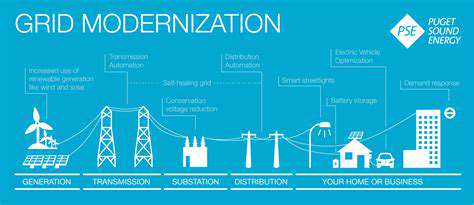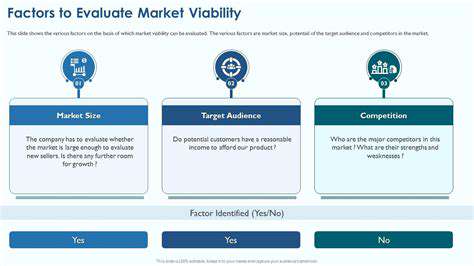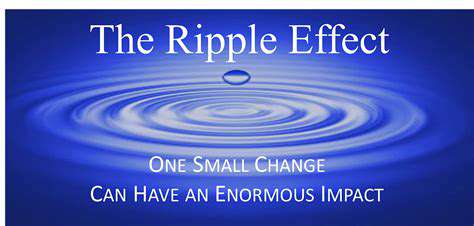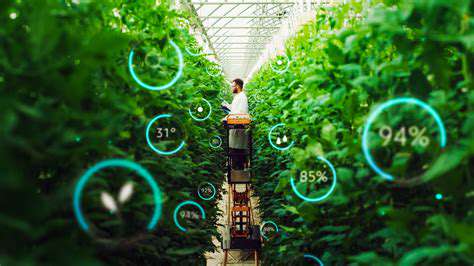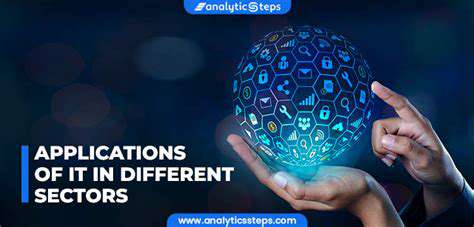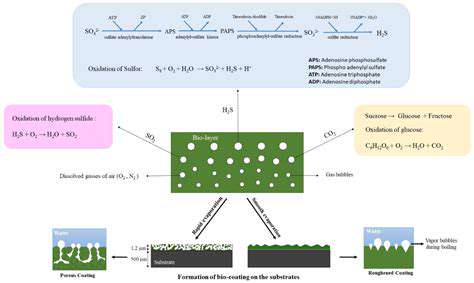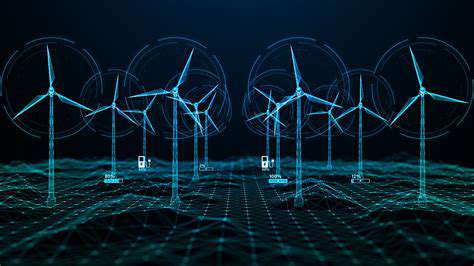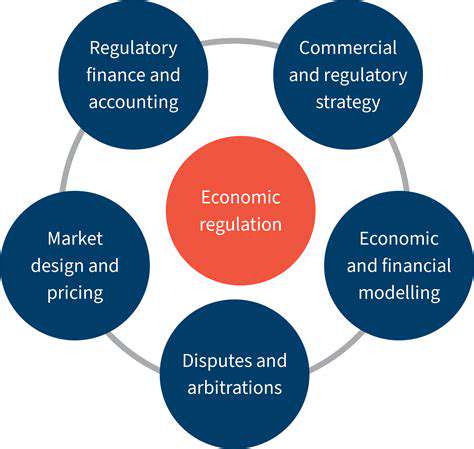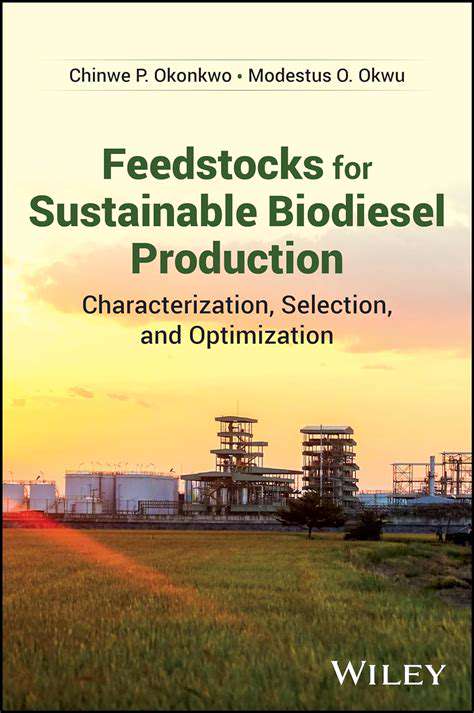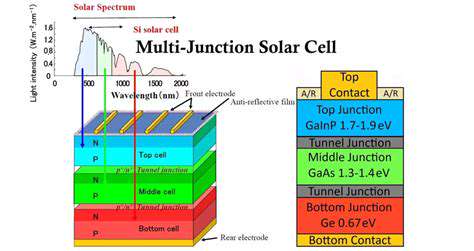Renewable Energy Procurement: A Comprehensive Guide for Businesses
Assessing Your Energy Needs and Defining Goals
Understanding Your Current Energy Consumption
A crucial first step in assessing your energy needs is to understand your current energy consumption patterns. This involves meticulously reviewing energy bills from the past year, identifying peak usage periods, and analyzing the types of energy you currently utilize. Understanding these patterns provides a baseline for comparison and helps identify areas where you can potentially reduce consumption and improve efficiency. This detailed analysis will be invaluable in determining the right renewable energy procurement strategy for your specific needs.
Gathering this data also allows you to identify any unusual or unexpected spikes in energy consumption. These anomalies might point to equipment malfunction, inefficient processes, or other factors that could be addressed before investing in renewable energy sources.
Setting Realistic and Measurable Goals
Defining clear, measurable goals for your renewable energy procurement is essential for success. Instead of a vague aspiration to go green, set specific targets for reducing energy consumption, transitioning to renewable sources, and achieving cost savings. For instance, a realistic goal might be to reduce energy consumption by 15% within the next three years, or to source 50% of your energy needs from renewable sources by 2025. These goals should be specific enough to track progress and ensure accountability.
Be sure to consider the practical constraints of your current infrastructure and resources. Setting overly ambitious goals can lead to frustration and ultimately hinder your ability to achieve the desired outcome. A well-defined plan will help you stay focused and motivated throughout your renewable energy procurement process.
Evaluating Your Available Renewable Energy Options
Once you understand your current energy consumption and have established realistic goals, it's time to evaluate the available renewable energy options. This includes solar, wind, geothermal, and hydropower. Each option has unique characteristics, benefits, and drawbacks that need to be considered in relation to your specific circumstances. Factors like geographical location, available space, and regulatory requirements all play a crucial role in determining the most suitable renewable energy source for your situation.
Researching the costs associated with each option, including installation, maintenance, and ongoing operational costs, is equally important. Comparing these costs to the projected energy savings over time is essential for making an informed decision. Consulting with energy experts and obtaining quotes from various providers can help you make an objective evaluation.
Developing a Comprehensive Procurement Plan
A comprehensive procurement plan should outline the steps needed to acquire and implement your chosen renewable energy solutions. This plan should include timelines for each stage, allocated budgets, and the roles and responsibilities of all stakeholders involved. It should also address potential risks and challenges, and include contingency plans to mitigate these risks. A well-structured plan provides a clear roadmap for your renewable energy procurement journey.
The plan should also include provisions for monitoring and evaluating the performance of your chosen renewable energy systems. Regular monitoring will allow you to track progress towards your goals and identify any areas needing adjustments or improvements. This ongoing evaluation is vital to ensuring the long-term viability and effectiveness of your renewable energy procurement strategy. Remember, a plan is only as good as its execution.
Exploring Renewable Energy Options and Technologies

Harnessing Solar Power
Solar energy, derived from the sun's radiant light, offers a compelling alternative to fossil fuels. Solar panels, converting sunlight directly into electricity, are becoming increasingly efficient and cost-effective, making them a viable option for both residential and commercial applications. This clean and sustainable energy source has the potential to significantly reduce our reliance on finite resources and mitigate the environmental impact of traditional energy production.
Furthermore, advancements in solar technology are constantly driving down costs, making solar power more accessible to a wider range of individuals and businesses. The integration of solar energy into our infrastructure is crucial for a sustainable future.
Tapping into Wind Energy
Wind turbines, capturing the kinetic energy of wind, have long been utilized to generate electricity. Modern wind turbines are significantly more powerful and efficient than their predecessors, capable of generating substantial amounts of clean energy. Wind farms, strategically located in areas with consistent wind patterns, can provide a reliable and abundant source of renewable power.
Embracing Hydropower
Hydropower, harnessing the energy of flowing water, is a well-established renewable energy source. Dams and hydroelectric power plants convert the potential energy of water into electricity. While hydropower has a substantial impact on the environment, modern approaches focus on minimizing environmental harm by considering the ecological impact of dam construction and water management.
These considerations are vital for ensuring the long-term sustainability of hydropower projects. The use of advanced technologies and careful planning can maximize the benefits of hydropower while minimizing negative consequences.
Utilizing Geothermal Energy
Geothermal energy taps into the Earth's internal heat, harnessing the natural heat of the Earth's core. This method of energy production is particularly useful in areas with high geothermal activity, and can provide a consistent and reliable source of power.
Exploring Biomass Energy
Biomass energy utilizes organic matter, such as wood, agricultural waste, and other plant-based materials, to generate heat or electricity. Burning biomass can release greenhouse gases, but sustainable biomass energy practices focus on utilizing waste products and using advanced technologies to reduce emissions. Careful consideration of the lifecycle of biomass fuels and the impact of their production is crucial for environmental sustainability.
Investigating Biofuels
Biofuels are liquid fuels made from renewable biomass sources, offering a possible alternative to petroleum-based fuels. These fuels can be used in vehicles and other machinery, potentially reducing reliance on fossil fuels. However, the production of biofuels can have environmental implications, such as land use changes and competition for agricultural resources, so careful consideration is needed for sustainable biofuel production. Further research and development are essential to optimize efficiency and minimize environmental impacts.
Managing the Implementation and Ongoing Operations
Planning for Implementation
A crucial aspect of successfully implementing renewable energy procurement is meticulous planning. This involves defining clear objectives, outlining specific timelines, and identifying potential challenges that may arise during the implementation process. Thorough research into available renewable energy sources, such as solar, wind, or hydro, and their suitability for the particular location and needs is essential. This planning phase also includes identifying potential partnerships, securing necessary permits and approvals, and creating a detailed budget that accounts for all anticipated costs. Comprehensive project management tools are key to staying on schedule and within budget. Effective risk management strategies are also vital to anticipate and mitigate potential issues.
Detailed project schedules are essential to track progress and ensure timely completion of each stage. This includes identifying key milestones, assigning responsibilities, and allocating resources effectively. Clear communication channels must be established among all stakeholders to facilitate seamless information exchange and address any concerns promptly. Furthermore, meticulous documentation of all decisions, actions, and outcomes is crucial for maintaining transparency, accountability, and a clear record of the entire process.
Securing Funding and Resources
Financing renewable energy projects often requires innovative approaches and securing diverse funding sources. This may involve exploring various funding mechanisms, such as government grants, loans, and private investments. Developing a compelling financial model that demonstrates the project's viability and potential returns on investment is essential to attract investors. Careful consideration of long-term financing strategies, including potential tax incentives and energy credits, is crucial for ensuring the project's financial sustainability throughout its lifecycle. The procurement process must be transparent and clearly outline the financial terms to build trust with investors.
Establishing Contracts and Agreements
Negotiating and establishing legally sound contracts with renewable energy providers is a critical step. These contracts should clearly define the terms and conditions, including the quantity of energy to be supplied, the price per unit, the duration of the agreement, and any potential penalties for non-compliance. Careful legal review and due diligence are crucial to ensure the contract's fairness and protect the interests of all parties involved. Detailed specifications and performance metrics should be clearly outlined to ensure accountability and transparent reporting throughout the contract's duration.
Ensuring compliance with relevant regulations and standards is vital to avoid legal complications. Thorough due diligence on the provider's financial stability and track record is essential to minimize risk. These contracts should also outline dispute resolution mechanisms to address potential disagreements or conflicts effectively.
Operational Management and Maintenance
Efficient operational management is critical for the long-term success of renewable energy projects. This includes establishing a comprehensive maintenance plan that addresses the specific needs of the chosen renewable energy technology. Regular inspections, preventative maintenance, and timely repairs are essential to ensure optimal performance and minimize downtime. Continuous monitoring of energy generation and consumption patterns is crucial for identifying potential issues and optimizing overall efficiency.
Developing a robust data management system is vital for tracking performance metrics and identifying areas for improvement. This includes collecting and analyzing data on energy production, consumption, and costs. Implementing appropriate reporting mechanisms to track progress and ensure transparency to stakeholders is paramount. Effective communication with stakeholders, including utility companies and regulatory bodies, is essential.
Sustainability and Community Engagement
Integrating sustainability principles into the project's lifecycle is essential for long-term viability and positive community impact. This involves considering environmental impacts, such as minimizing land use and promoting biodiversity. Community engagement initiatives are vital to address potential concerns and foster positive relationships with local residents. Transparency in communication regarding the project's environmental and social impacts is crucial for building trust and support. Long-term sustainability strategies should be incorporated into project planning to ensure its positive impact on the community and the environment for years to come.
Measuring and Reporting on Success
Defining Success Metrics
Measuring the success of renewable energy procurement requires a clear understanding of the specific goals and objectives. This involves defining key performance indicators (KPIs) that align with the overall sustainability strategy and business objectives. For example, a key metric could be the percentage reduction in greenhouse gas emissions achieved through the procurement of renewable energy. This metric, however, needs to be contextualized within the overall energy consumption profile and the potential for further reductions. Careful consideration should also be given to quantifiable metrics such as cost savings, energy security enhancements, and the positive environmental impact, such as reduced carbon footprint.
Another critical aspect of defining success metrics is considering the long-term implications of the procurement strategy. This includes considering future energy demands, evolving regulations, and technological advancements in renewable energy generation and storage. Proactive monitoring and adaptation of the KPIs are essential to ensure that the procurement strategy remains relevant and effective in achieving long-term sustainability goals. Success is not a single point in time, but an ongoing process of improvement.
Reporting on Procurement Progress
Regular and transparent reporting is essential to track progress, identify areas for improvement, and maintain stakeholder engagement. This reporting should encompass both quantitative and qualitative data, providing a comprehensive view of the procurement's performance. Quantitative data might include the total amount of renewable energy procured, the cost per unit of renewable energy, and the reduction in greenhouse gas emissions. Qualitative data could include feedback from stakeholders, details of any challenges encountered during the procurement process, and the impact of the procurement on community engagement.
The reporting process should be standardized and easily accessible to all stakeholders, including management, employees, and external partners. Regular updates on the progress of the procurement initiative, including any deviations from the planned trajectory, should be shared with stakeholders. This transparency builds trust and fosters accountability, ultimately contributing to a more successful and sustainable renewable energy procurement strategy.
Communicating Success and Impact
Effective communication is crucial for demonstrating the value and impact of the renewable energy procurement strategy. This communication should be tailored to different audiences, from internal stakeholders to external investors and the wider community. Clear and concise reports, presentations, and infographics should be used to highlight key achievements, cost savings, and environmental benefits. This will not only showcase the positive outcomes of the procurement but also foster a sense of pride and ownership among the teams involved. Furthermore, highlighting success stories and testimonials from satisfied stakeholders can further strengthen the narrative of positive impact.
Beyond formal reporting, consider opportunities for storytelling. Sharing personal narratives of how the procurement is impacting employees, communities, and the environment can create a deeper emotional connection and inspire further support. Utilizing social media and other digital platforms can amplify the message and reach a wider audience, demonstrating the tangible benefits of renewable energy procurement and inspiring others to adopt similar practices.
